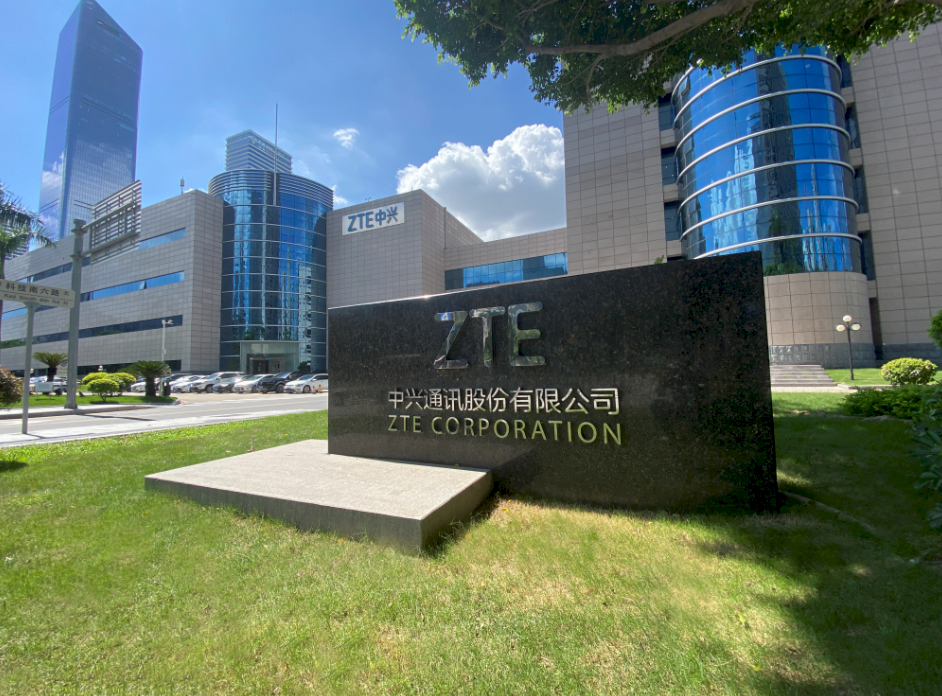At present, speeding up the construction of new infrastructure and industrial digitalization has become an important strategic development direction of China. As a typical representative of information infrastructure, 5G has been deployed for large-scale commercial use in the domestic ToC field, providing a new impetus for the digital transformation of economy and society. Thousands of industries are accelerating the implementation of 5G application scenarios. China’s 5G application innovation cases cover 22 important industries in the national economy. 5G network is accelerating the implementation in industrial manufacturing, mining, steel, port, medical care, and other fields. The 5G empowerment effect is becoming more obvious.
5G network is mainly oriented to three major fields: eMBB, URLLC, and mMTC. eMBB is mainly used in the preliminary stage of 5G private networks to provide basic connectivity and high-bandwidth services for consumers or industry customers. With deepening of 5G in thousands of industries, 5G private network will enter the 2.0 era. URLLC and mMTC will gradually become the main application scenarios in the 5G B2B private network field, and ultra-low latency, ultra-high reliability, and ultra-large connection features of network become necessary.
Oriented to the 14th Five-Year Plan for the development of digital economy, ZTE 5G core network evolves from a private network in the 1.0 era to a private network in the 2.0 era. ZTE launched the 5G core network 2.0 solution, providing a new cloud-network integrated 5G private network with ultra-low cost, physical isolation, security, and continuous evolution (see Figure 1). ZTE 5GC private network 2.0 focuses on four levels of innovation: Data & voice dual-engine private network, extreme reliability guarantee, ICE (Industrial Communication Engine, which is the industrial communication foundation), and a full-series of product systems, facilitating the high-quality development of these industries and continuously leading the digital transformation of them.

Dual-engine private network to construct a data & voice network
5G private network empowers industrial applications, not only for data services, but also for traditional voice services. In typical industrial scenarios such as coal mines, voice call and voice dispatching capabilities have become important parts of mine informatization.
Based on the industry 5G Core (i5GC) and industry IMS (iIMS) network capabilities, ZTE 5GC private-network 2.0 solution uses cloud cabinets to provide a “data and voice” dual-engine private network, and replicates ZTE’s experience in large-scale commercial VoNR in the B2C field to the B2B field.
This solution helps industry customers implement high-definition voice and video calls in mining areas, and fully implements the 5G network with full data and voice coverage. In addition, this solution can be interconnected with third-party voice dispatching vendors to fully integrate the 5G network into the private mine network and accelerate the intelligent upgrade and reconstruction of mines.
By deploying dedicated lightweight 5GC and IMS networks to private campuses (mining areas), the customer can use multiple kinds of terminals such as fixed and mobile terminals to make voice calls, and implement automatic/manual call distribution, and make other voice services for businesses. In addition, the private IMS can be interconnected with the operator’s public IMS to implement the interworking between private enterprise numbers and public phone numbers. Through the coordination between private network and public network, the advantages of private network can be given full play to provide enhanced voice capabilities.
To solve the problem that commercial terminals with Voice-Centric, which are widely used by industry customers, cannot access the network in the scenario where no IMS networks are deployed, ZTE launches the innovative AnyDevice solution. The P-CSCF component is built in i5GC to enhance the access engine and optimize the authentication logic, then industry customers can use any commercial terminal with Voice-Centric capability to access the B2B industry data private network without full IMS support, thus achieving zero-perception access, zero-hardware addition, and zero-terminal restriction, greatly enhancing the application scenarios of industrial private network.
Ultra-reliability private network to guarantee the security of the enterprise without worrying its production
As 5G goes deeper into the core services of enterprises, enterprises have higher requirements for the reliability of 5G network. According to the differentiated reliability requirements of the industry, the ZTE 5GC private network 2.0 takes the lead in grading the reliability of the industry private network, and provides the “4+1” high-reliability mechanism.
- Level-1 reliability: Through the self-healing, rebirth, and migration mechanisms, local recovery is fast when a fault occurs. It is applicable to the scenario where service interruption requirements are not high.
- Level-2 reliability: The 1+1 hardware redundancy mode is adopted, so there are no hardware single-point failure. The solution provides dual-networking with dual servers, switches, and firewalls, and dual-physical port backup. It is applicable to most private networks in the industry, and it is recommended for commercial deployment.
- Level-3 reliability: 1+1 hot/backup mode and session-level synchronization. Services are not interrupted when a fault occurs. This mode is applicable to the industrial application scenarios where the core network has high reliability requirements.
- Level-4 reliability: Through the introduction of dual-frequency 5G networks and end-to-end FRER (Frame Replication and Elimination for Reliability) technologies, providing mechanisms for the identification and duplication of frames to enable redundant transmissions, effectively reducing end-to-end latency, suppressing packet jitter, and improving end-to-end reliability. It is applicable to industrial application scenarios where end-to-end 5G systems have ultra-high reliability requirements.
- Loading the lightweight control plane functions of core network in UPF: In the dedicated application scenarios of public network, UPFs have a built-in lightweight emergency control plane. When the link between campus network and public network is interrupted, local services are inertia, and terminals can be automatically connected to the emergency control plane and recover services quickly, so that network disconnection is not interrupted.
Determine the industry communication foundation to empower full-connection of the industry
To meet the latest industrial strategic requirements, a deterministic 5G network is the core capability of 5G private network in the industrial field. Traditional telecom networks are configured in best-effort forwarding modes. Both delay and jitter are uncertain, and determinism is a key factor in industrial connection design. Industrial control and automation applications often need to send and receive data at specific intervals, and once data is not delivered at a specified time, it will be considered abnormal, causing serious consequences.
Although the traditional industrial Ethernet has been widely used in the industrial Internet field, such as EtherCAT and PROFINET, there are many industrial Ethernet protocols, and the standards are confused. Different protocols cannot be interconnected, and it is difficult to form a unified standard in the industrial Internet field. TSN (Time Sensitive Networking) provides a unified solution for the 5G+ industrial Internet. The 5G TSN standard has been introduced by 3GPP R16, and is continuously enhanced in R17 and R18, laying the foundation for providing deterministic unified standards for industrial Internet.
ZTE 5GC private network 2.0 introduces the ICE industrial communication foundation oriented to industrial Internet. It provides a series of new architectures, new features, and network capabilities including hyperconvergence of Ethernet PDU sessions, 5G LAN, TSN, and wireless core network for 5G+ industrial Internet. It supports technologies such as high-precision clock synchronization, stream-defined forwarding models, and core network intelligent scheduling data forwarding and queue management to provide end-to-end deterministic latency jitter.
In October 2021, ZTE, China Mobile, and NR Electric jointly released the industry’s first end-to-end deterministic 5G TSN network at PT Expo China. This network can effectively solve the network jitter problem caused by the conflict between network delay and transmission conflict. By using the network slicing technology and the separated forwarding and control technology, the network fundamentally ensures reliable transmission and deterministic delay of the network, thereby ensuring secure and stable operation of the network. At Mobile World Congress in Barcelona in 2022, “Green Grid Solution Based on 5G TSN” won the Market Development Award from GTI Awards.
Full-series private network product system to release powerful 5G dynamic and power
ZTE provides four series of private core network products (Mini5GC, standard i5GC, iCube, and Common Core) from the Mini version to the full version, flexibly meeting the deployment requirements in different scenarios in different industries.
ZTE i5GC is an industry-oriented lightweight core network product. It can be deployed on the new-generation R5300 G4X server of ZTE. Only one G4X server can provide an independent 4G/5G-integrated lightweight core network, helping enterprises quickly build networks at low costs. Up to now, standard i5GC products based on the 5300 G4/G4X server series have been widely used in various industries, facilitating in-depth convergence and efficiency improvement of 5G and industries.
In order to meet the requirements of industrial site-level flexible networking, as well as the low power consumption and flameproof requirements of underground safety operations such as mines, ZTE released the Mini5GC product based on the U9101 server series in August 2022, which has the smallest size with the same performance in the industry. Mini5GC uses the cloud native container architecture, ultra-small chassis design, and plug-and-play technology. The power consumption of the entire system is lower than 100W. Mini5GC can be deployed in specific industry application scenarios with strict restrictions on dimensions, networking, and power consumption.
ZTE iCube cloud & network cabinet products are integrated with cloud, network, industry, and dimension in a one-stop mode. Based on the lightweight cloud foundation TCF, the cloud cabinets can be configured with i5GC, iIMS, BBUs, MEPs, OLTs, and preset typical applications as well as third-party APPs on demand. The cloud & network cabinets can be flexibly placed in enterprise campuses or mobile access equipment rooms to meet the “last mile” network connection and computing power requirements of industry customers such as mines, intelligent manufacturing, ports, and transportation (see Figure 2).
At Mobile World Congress 2022 in Barcelona, ZTE won the GTI Awards 2022 Innovative Mobile Service and Application Award and Excellence Award for its ZTE iCube 5G private network as a service solution, demonstrating its outstanding contribution to mobile service innovation, business model innovation, and sustainable development.

ZTE’s full-version Common Core is designed for large-scale industrial campus. ZTE provides high-performance, full-featured, and highly secure standalone core networks for large-scale industries, meeting the requirements of industry application scenarios in complicated scenarios.
Conclusion
Along with deep development that 5G empowers industry, the industry urgently needs a new network that satisfies the characteristics of the industry. 5G evolves from a public network that provides basic connection capabilities to a new industry-dedicated core network that provides ultra-high bandwidth, deterministic latency jitter, ultra-high reliability, and ultra-simple local O&M. Under the guidance of China’s 14th Five-Year Plan and national 5G strategies, ZTE 5GC private network 2.0 solution continues to make contributions to the digital transformation of the industry.







